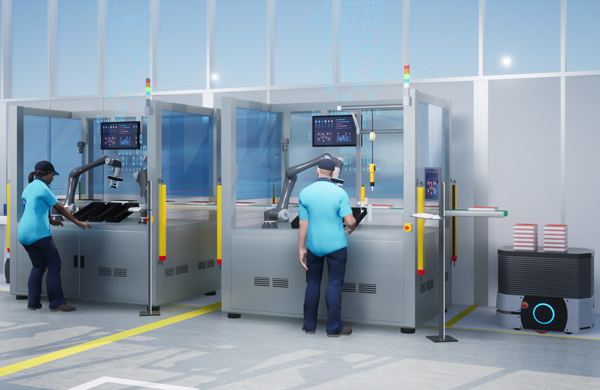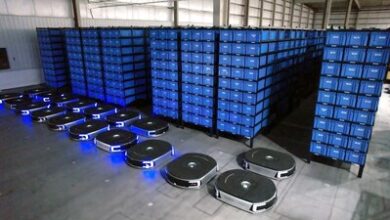Robotics, productivity and people

02 June 2024
As organisations turn to robotics to overcome skills shortages, they are discovering that the technology’s true value lies in its power to augment, rather than replace, human expertise, says Sam Tilley.

A growing lack of skilled workers has been pinpointed as a root cause of low productivity in manufacturing. The pool of qualified engineers coming through the education pipeline has also dwindled, and the industry faces tough competition from other sectors for graduates.
This means that many companies have had no choice but to embrace robotics to plug gaps in their workforces. In doing so, they have latched onto a number of new trends, such as human/machine harmonisation and flexible manufacturing, that are further driving adoption.
While skills shortages may be the main driver of robotics adoption currently, there is also a growing trend for the adoption ofmobile, collaborative robots (cobots). These machines work alongside their human colleagues, often as part of a process that cannot be fully automated at present.
Their purpose is to make human lives easier and safer and, by delegating activity to robots, manufacturers are able to free up their skilled workers to work on tasks such as product development or process optimisation – tasks that provide employees with greater job satisfaction and companies with more value.
So, the adoption of robotics in manufacturing is not about replacing people with machines. Instead, it is about using machines as tools that enable organisations to get the very best from their workers.
Flexible manufacturing
Flexible manufacturing systems (FMS), or systems with the agility to react rapidly to production changes, are also a growing trend. Unlike rigid setups and workflows, they give the ability to facilitate short runs, format changes, and customisation. FMS allows production lines to be more easily adapted to meet evolving customer demands, whether different packaging sizes for different clients, short-run customisations or even individually personalised products.
By removing much of the cost and risk associated with setting up a new product or batch in the traditional manufacturing model, a flexible workflow allows organisations to take on new projects, be more innovative, and stay competitive. When properly paired with advanced control systems that integrate machine and robotic software, robotics makes this possible. The technology can reduce the margin of error at the set-up and production stages, as well as during inspection.
Of course, none of this is possible without people. Skilled workforces are needed to direct, supervise and maintain FMS, and there is no replacement for the human decision-making abilities that ensure smooth operations.
As industry continues to embrace robotics, the technology will help solve the initial problem of workforce shortages from both ends. The sector’s shift from manual labour to a high-tech industry, where technology supports people, will enhance the reputation of manufacturing as a career choice, helping it to attract new talent that robot-enabled, optimised workflows will then help to retain.
Sam Tilley is Regional General Manager (UK, Ireland & Nordics) at Omron.



